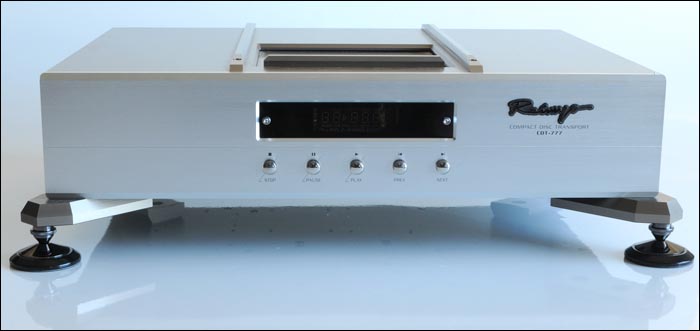|
This review page is supported in part by the sponsors whose ad banners are displayed below
|
|||||||||||||||
 |
|||||||||||||||
 |
|||||||||||||||
 |
|||||||||||||||
Reviewer: Marja & Henk Financial Interests: click here Sources: CEC TL5100, Audio Note tube DAC; Philips DVP 5500S SACD/DVD player; iPod Video; Thorens TD 160; Thorens TD124 Preamp/integrated: TacT RCS 2.0 room control system, modified Audio Note Meishu with WE 300B (or AVVT, JJ, KR Audio 300B output tubes); Tri TRV EQ3SE phonostage; Trends Audio TA-10; Qables iQube; KingRex T20U and Slap; Yarland FV 34 CIIISA Speakers: Avantgarde Acoustic Duo Omega; Avantgarde Acoustic Solo in HT 2.0 setting; Podium Sound Podium 1 [on loan] Cables: Audio Note AN/Vx interconnects; Siltech Paris interconnects; Gizmo silver interconnect; Qunex 75 reference interconnect; Crystal Cable CrystalConnect Reference interconnect, CrystalDigit S/PDIF RCA/RCA and RCA/BNC, Y-cable, Crystal Cable Piccolo iPod to XLR, CrystalPower Reference AC-Eur/IEC CrystalSpeak Reference; Audio Note AN-L; Gizmo silver LS cable. Nanotec Golden Strada #79 nano 3; Nanotec Golden Strada #79; Nanotec Golden Strada #201 nano3; full ASI LiveLine set; LessLoss DFPC [in for review] Power line conditioning: none Equipment racks: Two double sets of Solid Tech Radius; Acoustic System amplifier shelf Sundry accessories: IAR carbon CD damper; Boston Audio graphite CD damper, Denson demagnetizer CD; Furutech DeMag; Nanotec Nespa #1; Machina Dynamica Magic Box; TacT RCS calibrated microphone and software; Exact Audio Copy software; Compaq server w/Windows Server 2008 and XP; ; wood, brass and aluminium cones and pyramids; Manley Skipjack; Boston Audio Design TuneBlocks; ASI TopLine Room treatment: Full apartment treatment by ASI with Acoustic System Resonators and Sugar Cubes; Gizmo's Harley Davidson cap Room size: ca. 8.0 x 4.70m with open extension to a 2.20 x 2.40m A/V bay and open kitchen. Ceiling height is 2.50m, reinforced concrete walls of 45cm, reinforced concrete floors and roof of 30cm. Room has on one side a large glass bay. Review component retail: €8,900 CDT-777, €8,990 DAP-999EX, includes 19% VAT |
|||||||||||||||
 |
|||||||||||||||
|
This image opens to full size in a new window
Over the past half year, we have first been intrigued and later become very interested in the differences of perception between various social and cultural groups in our global society. One of the reasons for diving into this matter is directly linked to our audio hobby. When listening to reproduced music in a mixed cultural environment with music lovers of Western and Asian descent, we noticed on numerous occasions a clear possibility for making an educated division. This division was quite strong and focussed on the perception of music. Reproduced music of course is a completely different animal than live music. In all the years we have been interested in reproduced music, we never suffered the hallucination of listening to the real thing. No matter how elaborate and fine the recording and production was, no matter whether the reproduction system was big or small, budget or unaffordable, the sensation of a real performance you get already when passing an open window from behind which someone is playing live we've never had. In our experience, even a beginner's violin behind that open window is never met by recording or playback systems. |
|||||||||||||||
|
| |||||||||||||||
|
All music lovers we've had this discussion with agree that reproduced music is intrinsically different from live music. Some compare a sound recording to what a photo is for the visual arts. A photo is an artistic capture of a part of the scene's reality, a clipping of the whole the photographer saw before he cropped the image into what she thought the essence was of the scene. For the viewer of the photo, it is recognizable as a scene and the viewer remains aware that it represents only a part of the greater reality the photo was taken from. The photographer manipulated reality by leaving out certain parts (or added others in Photoshop). Blemishes on a model's body or the scrap yard next to the idyllic scene are retouched just like certain features of said model are enhanced and the sky in the scene is made more dramatic. All in all we as onlookers know that the photo is different from reality even though we can enjoy it tremendously. The same is true for reproduced music. Of the live performance, a cropped image is made either on purpose by the engineer or due to limitations in the recording equipment - but it is always only an image. Further down the line the image gets more processed until at the end, it gets the final processing in the home as we listen to it. And we enjoy the reproduction in its own right just as we do the Ansel Adams poster on the wall that's not even the original photo! |
|||||||||||||||
 |
|||||||||||||||
|
This image opens to full size in a new window
So we agree with many others that we have fun with a cropped manipulated image of an event. On top of that, the original event was witnessed only by a very, very few people. Trying to fully recreate that event would mean we have to manipulate, again. But manipulation of the time-space continuum necessary for that recreation is still somewhat troublesome. For now we stick to the hifi credo. |
|||||||||||||||
|
| |||||||||||||||
Our quest led us to many interesting publications and lectures on the differences in perception between cultures and we were captivated by the diversity and implications of the ways of looking at the world as we know it. In order to explain this a little, it is easier to revert to the optical media. People in Western cultures tend to engage in context-independent and analytic perceptual processes by focusing on a salient object (or person) independently from the context in which it is embedded. On the other hand, people in East Asian cultures tend to engage in context-dependent and holistic perceptual processes by attending to the relationship between the object and the context in which the object is located. A test has been described in which a group of Chinese and American children were asked to group two objects together from a picture with a man, a woman and a baby. The Chinese children would group the woman and the baby together whereas the American children would group the man and the woman together. The first grouping was based on the rationale that a woman takes care of the baby while the second rationale was that the man and the woman were both grownups and hence belonged to the same group. |
|||||||||||||||
 |
|||||||||||||||
 |
|||||||||||||||
 |
|||||||||||||||